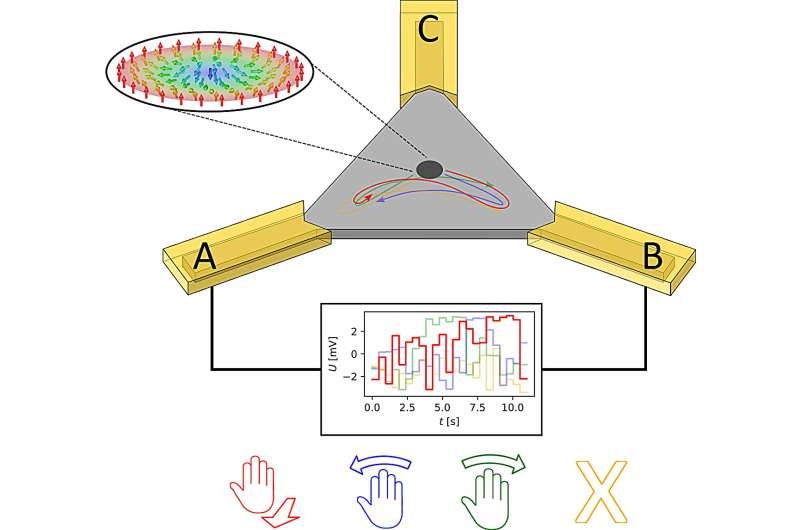Researchers at Johannes Gutenberg University Mainz have developed a novel approach to energy-efficient computing using magnetic skyrmions, revolutionizing the way we interact with technology.

Moving Towards the Future With Gestures
Now a team of researchers made a groundbreaking discovery, improvinig the Brownian reservoir computing with hand gestures so that they can be recorded and simulate to the system. Skyrmions — chiral magnetic whirls with huge technological promise for novel data storage and computing applications — then read out these gestures.
To their surprise, the researchers found that their solution based on hardware was not only comparable to software solutions requiring energy-intensive neural networks, but even outperformed them. Professor Mathias Kläui’s research group at the JGU Institute of Physics is impressed: “It is surprising to see how well and even better our hardware approach and concept work compared to energy-intensive software solutions based on neural networks,” says Grischa Beneke.
One major advantage of this Brownian reservoir computing approach is that it can be trained with very few random samples, potentially lowering the total energy consumed. As Beneke puts it, “We just need to add a small output head that maps the result. Imaging a pond with stones thrown… propagating waves spin through the water. The output of the system behaves like how noiseless(impure) waves show little hint about how many stones and where the stones are placed.
The Power of Skyrmions
Central to the system is the skyrmion—chiral magnetic whirls. These skyrmions are believed to be highly beneficial in unconventional computing devices and information carriers in next-generation data storage devices.
Skyrmions are just amazing. Initially, they were considered as data storage candidates but they also hold enormous opportunities for applications in computing coupled with sensor systems,” adds Professor Mathias Kläui, who heads this area of research at JGU.
Researchers have shown that they can recognize simple hand gestures with over 90% accuracy by interpreting the thermal noises made by skyrmions sensors with Brownian Reservoir computing. It does this by capturing the gestures with Range-Doppler radar with two Infineon Technologies radar sensors. Then, radar data are encoded into the corresponding voltages which will be provided to the reservoir.
In this example, the reservoir is a thin film stack multi- layer that includes various materials in triangular shape whereby each of its corners comprises contacts. The other contacts provide the voltage that shifts the skyrmion into position inside the triangle. “Since the Synchronize routine sends signals in response to a preset pattern, we can reliably detect intricate movements,” says Grischa Beneke. “From these images of the skyrmion movements, we can infer what the radar system has measured as movements.
Conclusion
The synergy between Brownian reservoir computing and skyrmions has thus become one of the breakthroughs in micro-science in terms of energy efficient computation. The researchers have used this natural dynamic in skyrmions to create a hardware solution that not only compares but outperforms software-based methods at the expense of high energy consumption. This development offers a model that opens up an avenue for a future where interfaces are less cumbersome and more intuitive, seamless, and energy-efficient — significantly transforming the way we compute and communicate with the digital realm.
